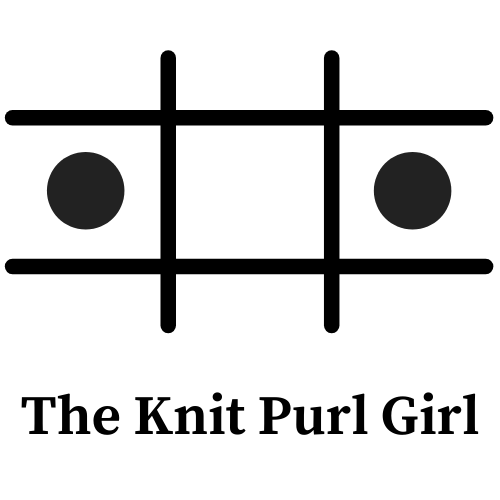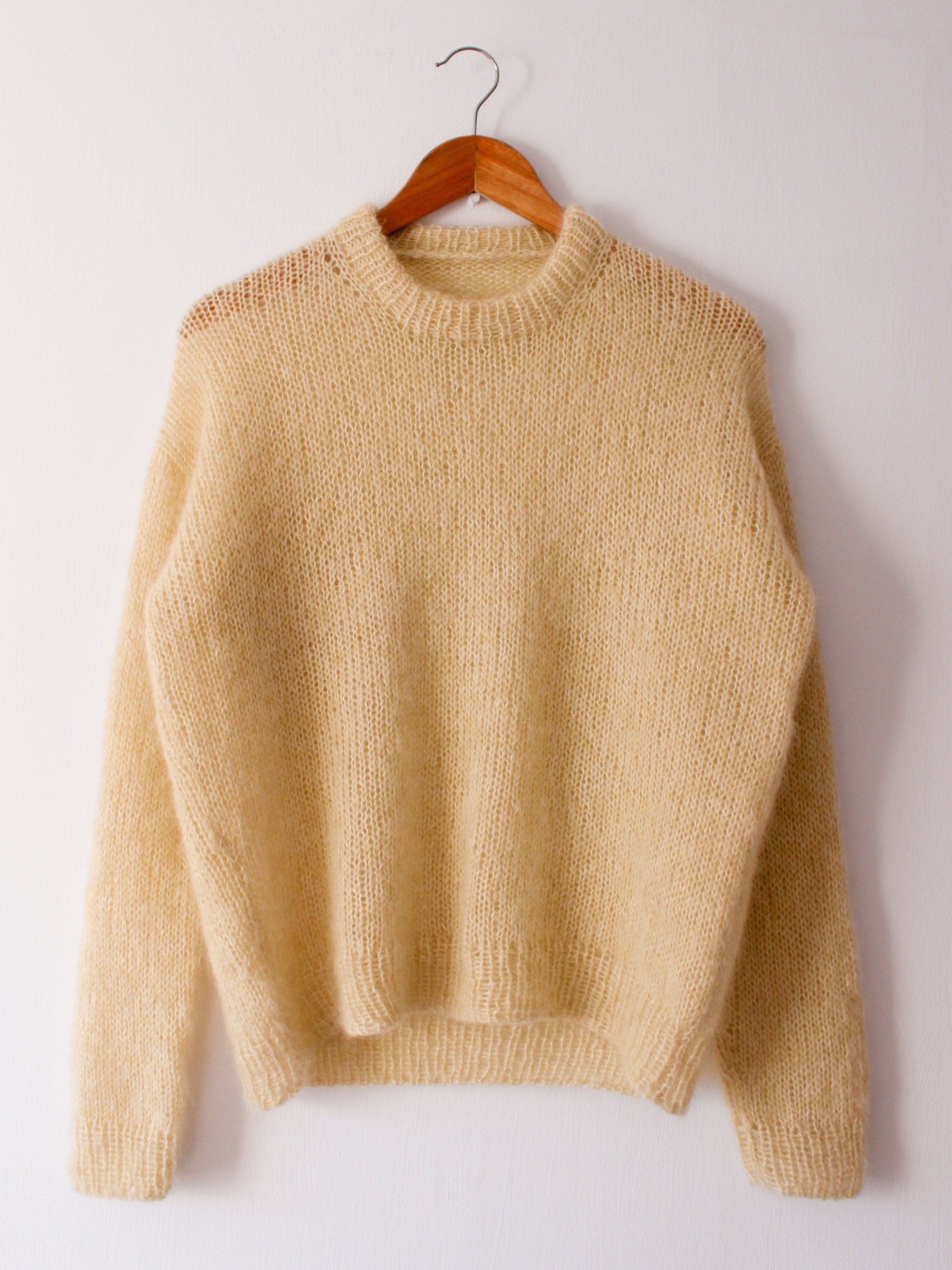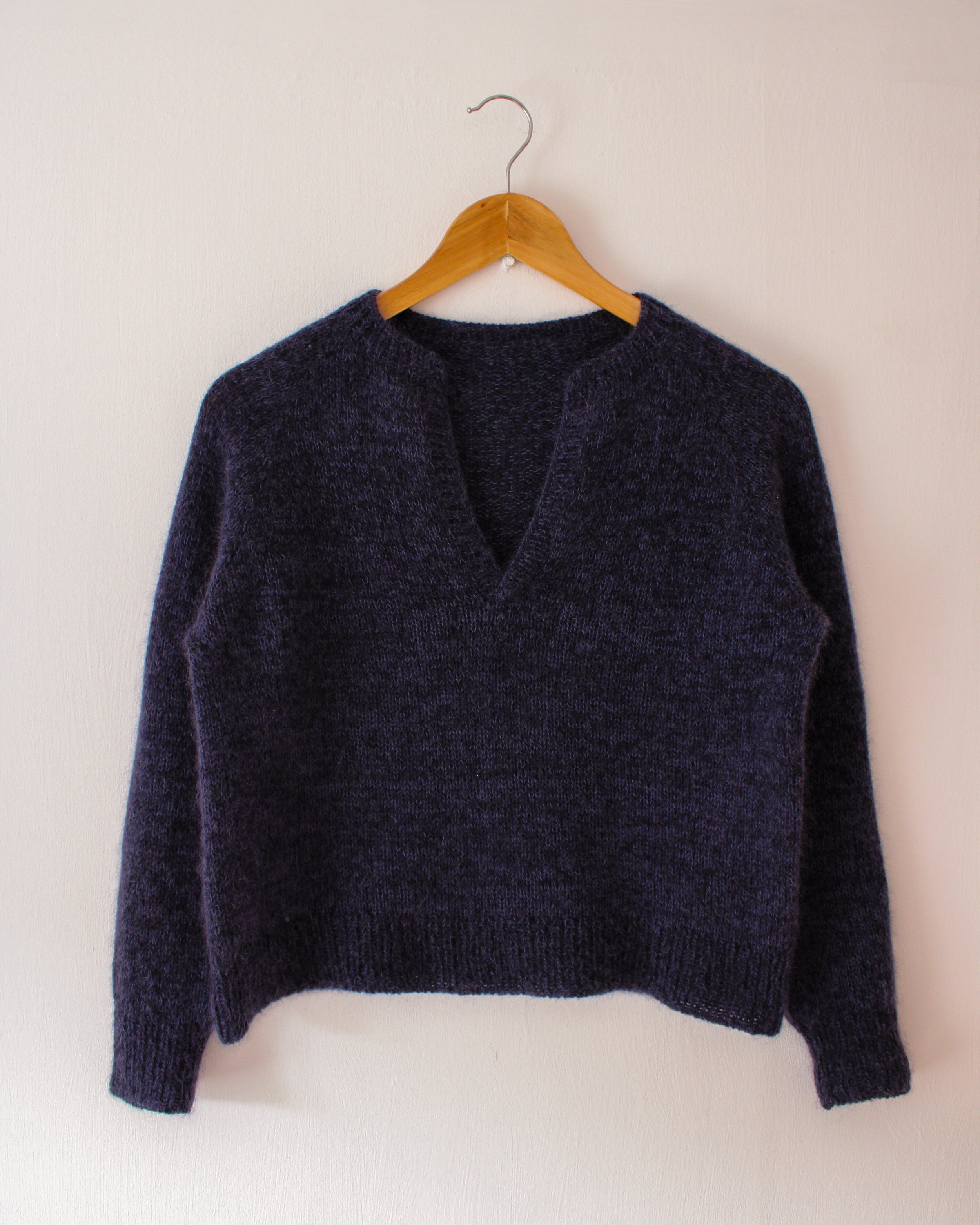Feather Sweater
The Feather Sweater is a lightweight drop-shoulder sweater, ideal for spring. It is worked top-down, and the body and sleeves are knitted in the round. To begin, the back panel panel is worked with shaping throughout. You will then form each shoulder in turn, and then join them to form the front panel panel. This also has shaping throughout to mirror the back. Next, you will join your work in the round and you then work some decreases through the body to give the sweater some extra shape. Once the body is completed, you will add on the collar and sleeves. To finish, you will sew up faux seams on the body and sleeves to add structure to the fabric.
The Feather Sweater has been professionally tech edited by Wendy Sargeant (@leftleaningstitch). Should you require pattern support, please email me at the.knit.purl.girl2020@gmail.com or use the contact form on this site.
Please note that this is a digital pdf download and not a physical knitting pattern.
The Feather Sweater is a lightweight drop-shoulder sweater, ideal for spring. It is worked top-down, and the body and sleeves are knitted in the round. To begin, the back panel panel is worked with shaping throughout. You will then form each shoulder in turn, and then join them to form the front panel panel. This also has shaping throughout to mirror the back. Next, you will join your work in the round and you then work some decreases through the body to give the sweater some extra shape. Once the body is completed, you will add on the collar and sleeves. To finish, you will sew up faux seams on the body and sleeves to add structure to the fabric.
The Feather Sweater has been professionally tech edited by Wendy Sargeant (@leftleaningstitch). Should you require pattern support, please email me at the.knit.purl.girl2020@gmail.com or use the contact form on this site.
Please note that this is a digital pdf download and not a physical knitting pattern.
The Feather Sweater is a lightweight drop-shoulder sweater, ideal for spring. It is worked top-down, and the body and sleeves are knitted in the round. To begin, the back panel panel is worked with shaping throughout. You will then form each shoulder in turn, and then join them to form the front panel panel. This also has shaping throughout to mirror the back. Next, you will join your work in the round and you then work some decreases through the body to give the sweater some extra shape. Once the body is completed, you will add on the collar and sleeves. To finish, you will sew up faux seams on the body and sleeves to add structure to the fabric.
The Feather Sweater has been professionally tech edited by Wendy Sargeant (@leftleaningstitch). Should you require pattern support, please email me at the.knit.purl.girl2020@gmail.com or use the contact form on this site.
Please note that this is a digital pdf download and not a physical knitting pattern.
Materials & Fit
Notions: You will need the following needles:
3.5 mm [US 4] circular needles with a 40-cm [16-in] cord
4 mm [US 6] circular needles with a 40- and 80-cm/100-cm [16- and 32-in/40-in] cord
6 mm [US 10] circular needles with a 40- and 80-cm/100-cm [16- and 32-in/40-in] cord
Depending on your preferences, you may also find 4 mm [US 6] and 6 mm [US 10] double-pointed knitting needles useful for the sleeves.
You will also need some stitch markers, a darning needle, and possibly also some shirring elastic to reinforce the collar.
Tension: 14 stitches x 20 rows and rounds in Stockinette stitch on 6 mm [US 10] needles = 10 x 10 cm [4 x 4 in]. Make sure to wash and block your swatch for the most accurate results. Please note that I have tighter-than-average row gauge, but this isn’t too important in this pattern. You may wish to go up or down a needle size, working in 0.25/0.5 mm increments as needed, to meet gauge.
Sizing and ease: The Feather Sweater has a recommended positive ease of 25-30 cm [6.25-9 in] for Sizes A-H and 25-35 cm [4.75-9.5 in] for Sizes I-L around the chest (or the widest part of your torso). I have graded this pattern with fixed ease (meaning there is roughly the same amount of positive ease across the size range), but you may wish to size down if you would prefer a closer-fitting garment. If you are knitting one of the smaller sizes and would like the option of having less ease, please feel free to email me and I will make recommendations to suit your needs.
If you want a tighter fit, you should feel free to pick a size with less positive ease relative to your body using the measurements given below, and vice versa if you prefer a looser fit. If in doubt, I recommend measuring a garment you already own that is also oversized and using that as a guideline to help you find your preferred fit.
Size: A (B) C (D), E (F) G (H), I (J) K (L)
Chest measurement (cm): 75-80 (80-85) 85-90 (90-95), 95-100 (100-105) 105-110 (110-115), 115-125 (125-135) 135-145 (145-155)
Chest measurement (in): 29.5-31.5 (31.5-33.5) 33.5-35.5 (35.5-37.5), 37.5-39.25 (39.25-41.25) 41.25-43.25 (43.25-45.25), 45.25-49.25 (49.25-53.25) 53.25-57 (57-61)
Actual circumference of garment at chest (cm): 105.5 (110) 115.5 (120), 125.5 (130) 135.5 (140), 148.5 (160) 170 (180)
Actual circumference of garment at chest (in): 41.5 (43.25) 45.5 (47.25), 49.5 (51.25) 53.5 (55.25), 58.5 (63 (67) 70.75
Actual circumference of garment at hips (cm): 91.5 (95.5) 101.5 (105.5), 111.5 (115.5) 121.5 (125.5), 134 (145.5) 155.5 (165.7)
Actual circumference of garment at hips (in): 36 (37.5) 40 (41.5), 43.75 (45.5) 47.75 (49.5), 52.75 (57.5) 61.25 (65.25)
Actual yoke depth at outer edges of the yoke (cm): 20 (20.5) 21 (22), 22.5 (23) 23.5 (24.5), 26 (28) 30 (32)
Actual yoke depth at the outer edges of the yoke (in): 7.75 (8) 8.25 (8.5), 9 (9.25) 9.25 (9.75), 10.25 (11) 11.75 (12.5)
Sleeve circumference at upper bicep (cm): 39.5 (40.5) 42 (43.5), 45.5 (46.5) 47 (49.5), 52 (56.5) 59.5 (63.5)
Sleeve circumference at upper bicep (in): 15.5 (16) 16.5 (17.25), 18 (18.25) 18.5 (19.5), 20.5 (22.25) 23.5 (25)
Please note that the sleeves have 14 cm [5.5 in] recommended positive ease at the upper bicep.
Recommended sleeve length (cm): 44 (43) 41.5 (40.5), 39 (37.5) 36.5 (35.5),33.5 (30.5) 28 (25.5)
Recommended sleeve length (in): 17.25 (17) 16.25 (16), 15.25 (15) 14.25 (14), 13 (12) 11.25 (10)
Yarn: You have a couple of different options here. The sample Feather Sweater was made with 3 strands of silk-mohair yarn held together. If you would also like to use 3 strands held together, you will need a total of approximately 1,710 (1,780) 2,010 (2,160), 2,260 (2,410) 2,490 (2,660), 2,830 (3,130) 3,310 (3,630) m [1,870 (1,950) 2,200 (2,346), 2,470 (2,630) 2,720 (2,910), 3,090 (3,420) 3,620 (3,970) yds] of yarn. I have tried to be generous with these estimates.
This sample garment was made with Knitting For Olive Soft Silk Mohair (70% mohair, 30% silk; 25 g = 225 m [247 yds]). If you also wanted to use this yarn, you would need a total of 8 (8) 9 (10), 10-11 (11) 11-12 (12), 13 (14) 15 (17) balls of Soft Silk Mohair.
For both of these samples, however, each strand of yarn I held together was a different colour (specifically, these were Cream, Elderflower, and Dusty Banana), and so I purchased a total of 12 balls of yarn, 4 in each colour, to make sure I had enough yarn for my Size D sample.
Another option is to hold a bulky-weight single-ply yarn by itself. I would lean towards yarn with a large halo/lots of texture. For example, I am currently making a second sample using Sandnes Garn Børstet Alpakka (96% brushed alpaca, 4% nylon; 50 g = 110 m [120 yds]) in the shade 5043. The sample isn’t quite finished yet, but I will update this pdf and the pattern listings when it’s ready. The fabric isn’t quite as delicate as the three strands of silk-mohair, but this is a much more budget-friendly and really lovely option. If you would like to work with this kind of yarn, you will need a total of approximately 570 (600) 670 (720), 760 (800) 830 (890), 950 (1,050) 1,110 (1,210) m [630 (650) 740 (790), 830 (880) 910 (970), 1,040 (1,150) 1,210 (1,330) yds].
This works out to be 6 (6) 6-7 (7), 7 (8) 8 (8-9), 9 (10) 10-11 (11-12) balls of Bøstet Alpakka.
Techniques include a range of leaning increases and decreases, working flat and in the round, picking up and knitting stitches along horizontal and vertical edges, a tubular cast-off, working an applied folded collar, and German short rows.



















